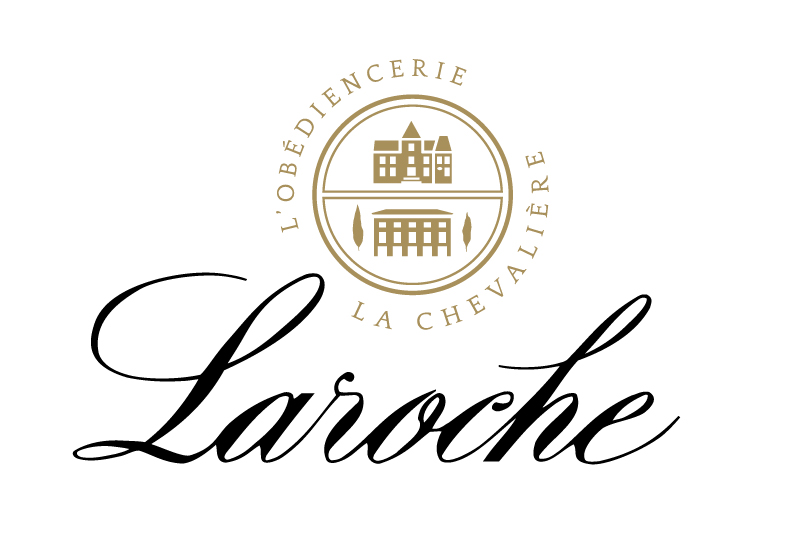Domaine Laroche, Chablis 1er Cru `Côte de Léchet`


Vintage: 2023
| Vintage | Product Code | Format | Closure | Availability |
|---|---|---|---|---|
| 2023 | LA527B23 | 6 x 75 | Natural Cork | Available |
Producer
Domaine Laroche is based in ‘L’Obédiencerie’, a former monastery in the village of Chablis where wine has been made for over 1,000 years. Despite their impressive history, Domaine Laroche is dynamic, and a modern outlook permeates everything they do. They consistently produce impeccable wines, defined by the Chablis hallmark of crystalline purity and racy acidity.
Domaine Laroche’s vineyard ownership notably sets them apart. Chablis is a fragmented region, and it is uncommon for producers to own large vineyard holdings. However, Domaine Laroche owns 90 hectares of vines in the appellation, including 21 hectares of 1er Cru and six hectares of Grand Cru vineyards. In addition to these vineyards, the domaine has developed long-standing purchasing partnerships with 40 small growers and works closely with them on their vineyard management. This historic domaine continues to make and mature their 1er and Grand Cru wines in the monastery's original cellars.
Domaine Laroche takes a meticulous approach to winemaking under the stewardship of their technical director and winemaker Romain Chevrolat. Despite being only 30 years old, Romain already has an impressive CV, including a stint at Domaine de la Romanée-Conti. Romain’s philosophy centres on the notion that to create the purest expression of Chablis, the domaine must first focus on their vineyards. As a result, Domaine Laroche has implemented sustainable viticulture practices, farming without artificial pesticides or herbicides. They have planted cover crops to improve soil water retention and minimise erosion on the steeper slopes, embrace biodynamic principles in their Grand Cru parcels and support programmes to protect biodiversity. This includes installing beehives in the Vaudevey Valley and working closely with a Burgundian bird protection charity to reintroduce endangered species of owls to the area. In the winery, they ferment their wines with indigenous yeast and embrace a minimal intervention approach.
Honouring the patron saint of Chablis, the ‘Saint Martin’ blends from Domaine Laroche’s best Chablis Villages sites. 15% is fermented in used oak barrels, adding texture to the palate and complementing the quintessential Chablis crystalline acidity. The ‘Essence des Climats’ is another example of Romain’s blending skills, this time utilising various Chablis 1er Crus planted on the region's famed Kimmeridgian clay soils. The 1er Cru ‘Vaudevey’ conveys this remarkable site's unique sense of place, characterised by vivacity and freshness. This steep east-southeast-facing vineyard is bathed in the morning sun before being more shaded in the afternoon, resulting in a slower ripening of the grapes and a wine characterised by freshness.
Sitting atop the Laroche quality hierarchy is the ‘Réserve de l’Obédience’ Grand Cru ‘Les Blanchots’, which blends the finest parcels from within Domaine Laroche’s four hectares of Grand Cru ‘Les Blanchots’. It is only produced in the best vintages.
Vineyards
The ‘Côte de Léchet’ 1er Cru is widely regarded to produce some of Chablis' most powerful wines. Here, Domaine Laroche has a parcel that includes some of their oldest vines, whose ownership dates to the original Pontigny monks. The site is well exposed on the left bank of the hill and receives optimal sunlight during the growing season.
Vintage
The 2023 vintage is defined by excellent quality and strong yields, reminiscent of 2020. The growing season began with a mild winter, followed by sporadic spring frosts in late March and early April. April showers helped replenish water reserves through the subsequent hot, dry summer. However, this also brought the threat of mildew, meaning careful vineyard management was essential. The summer heat continued through to September, but cool nights allowed the grapes to ripen optimally whilst maintaining good acidity levels. Harvest ran from September 7th through to the 21st.
Vinification
The fruit was hand-harvested and sorted at the winery before being fermented in a selection of oak barrels (aged between one and seven years old) and small stainless-steel tanks (228, 400 and 600 litre capacity). After malolactic fermentation, the wine aged in the same casks and tanks on its fine lees for nine months. Following blending, it continued ageing on its fine lees until bottling.
Tasting Notes & Technical Details
Pale lemon in colour, the nose is defined by notes of fresh pineapple, white peach and almond flour. The palate is ripe, fleshy and rounded, with zippy acidity and a long, mineral finish.
Alcohol (ABV)
12%
Other wines from this producer
Producer | Wine | Product Code | Features | Style | |
|---|---|---|---|---|---|
| Domaine Laroche | Chablis 1er Cru `Les Vaillons` Vieilles Vignes | LA506 | W | Factsheet | |
| Chablis Grand Cru `Les Blanchots` | LA508 | W | Factsheet | ||
| Chablis Grand Cru `Les Clos` | LA509 | W | Factsheet | ||
| Chablis Grand Cru Les Blanchots `Réserve de l'Obédience` | LA510 | W | Factsheet |